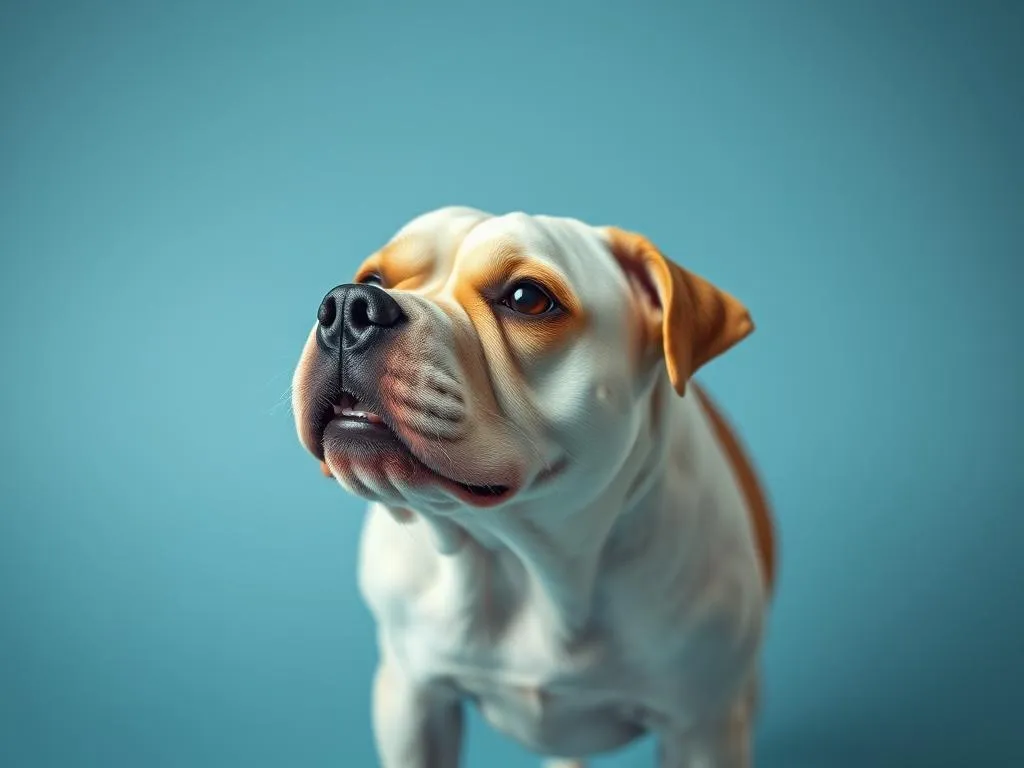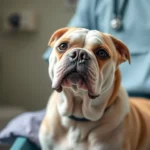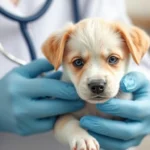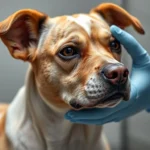
Introduction
It’s not uncommon for pet owners to experience a moment of panic when they discover that their beloved dog has swallowed something they shouldn’t have—like underwear. This behavior, while concerning, is more common than many realize. Dogs are naturally curious creatures, and their penchant for chewing and swallowing foreign objects can lead to serious health issues. Understanding the implications of this behavior and knowing how to respond can be vital for your dog’s health and wellbeing.
In this article, we’ll explore what happens when dogs swallow foreign objects, particularly underwear, and the risks associated with this behavior. We’ll also discuss the signs to watch for, what steps to take, and treatment options available. By the end, you’ll be equipped with the knowledge to handle this situation confidently.
Understanding the Situation
What Happens When Dogs Swallow Foreign Objects?
Dogs have a unique digestive system that can typically handle the food they were designed to eat, such as meat and vegetables. However, when it comes to foreign objects like underwear, the situation becomes more complicated. The dog’s stomach and intestines can struggle to process these materials, leading to potential blockages or tearages in the digestive tract.
The digestive process works in a series of stages, starting from the mouth to the stomach and intestines. When a dog swallows something foreign, it may not break down as food does. Instead, it can get stuck in the stomach or intestines, causing severe complications. If the item is large or sharp, it can result in perforations, which can be life-threatening.
Why Do Dogs Swallow Underwear?
Understanding why your dog might engage in this behavior can help mitigate future incidents. There are several behavioral reasons why dogs might swallow underwear:
- Anxiety: Dogs experiencing anxiety may chew on or swallow items for comfort. The scent of their owner on fabric can provide a sense of security.
- Boredom: Dogs that are left alone for extended periods may resort to chewing on household items, including clothing, as a way to entertain themselves.
- Teething: Puppies are particularly prone to chewing on various objects, including fabric, as they are teething.
The appeal of fabric items, such as underwear, can be attributed to their texture and scent. Dogs have a highly developed sense of smell, and they may find the scent of their owner’s clothing irresistible.
Symptoms to Watch For
Immediate Signs of Distress
If your dog has swallowed underwear, it’s essential to monitor them closely for any immediate signs of distress. Some common symptoms may include:
- Vomiting: This is a primary indicator that something is wrong.
- Lethargy: A sudden decrease in energy levels can signify a problem.
- Loss of Appetite: If your dog refuses to eat or drink, it could be a sign of digestive distress.
If you notice any of these symptoms, it’s crucial to take action quickly.
Delayed Symptoms
Some symptoms may not appear immediately. These delayed symptoms can arise after a few hours or even days:
- Abdominal Pain: Your dog may show signs of discomfort, such as whining or excessive licking of their abdomen.
- Constipation: If your dog is straining to defecate, this could indicate a blockage.
- Diarrhea: The presence of fabric in the digestive tract can cause changes in stool consistency.
If you notice these symptoms, it’s essential to consult your veterinarian as soon as possible. Delayed treatment can lead to more severe complications.
What to Do if Your Dog Swallows Underwear
Stay Calm and Assess the Situation
First and foremost, it’s important to remain calm. Panic can cloud your judgment and lead to hasty decisions. Once you’ve assessed the situation, take the following steps:
- Check your dog: Look for any immediate signs of distress.
- Determine the timing: Note when you believe your dog swallowed the underwear.
- Avoid inducing vomiting: Unless directed by a veterinarian, do not attempt to make your dog vomit, as this can cause further complications.
When to Contact a Veterinarian
The next step is to determine when to call your vet. Here are some guidelines:
- Immediate symptoms: If your dog is showing any immediate signs of distress, such as vomiting or lethargy, contact your veterinarian without delay.
- Timing: If you know your dog swallowed the underwear within the last couple of hours, it’s essential to act quickly.
- Behavior changes: Any sudden changes in behavior, such as loss of appetite or excessive drooling, should prompt a call to your vet.
In some cases, immediate action may be necessary, especially if your dog is in significant distress.
Veterinary Diagnosis and Treatment
Initial Examination
When you take your dog to the vet, they will conduct a thorough examination. This typically includes:
- Physical examination: The vet will assess your dog’s overall condition and check for any signs of discomfort.
- Medical history: Be prepared to provide details about when and what your dog swallowed.
Treatment Options
The treatment your dog receives will depend on the specific circumstances surrounding the incident. Here are some potential treatment options:
- Observation: If your dog is stable and not showing immediate distress, the vet may recommend monitoring them closely to see if the item passes naturally.
- Endoscopy: In cases where the item is lodged in the esophagus or stomach, an endoscopy may be performed to remove it using a small camera and tools.
- Surgery: If the object has caused a blockage or perforation, surgical intervention may be necessary. This is often the most urgent scenario and can be life-saving.
Your veterinarian will guide you through the best course of action for your dog’s specific situation.
Preventing Future Incidents
Understanding Your Dog’s Behavior
Preventing future incidents starts with understanding your dog’s behavior. Here are some tips for keeping your dog out of trouble:
- Training: Basic obedience training can help establish boundaries and discourage unwanted behaviors, such as chewing on clothing.
- Behavioral modification: If your dog is anxious or bored, consider consulting with a dog trainer or behaviorist to help address these issues.
Safe Management of Household Items
In addition to behavioral modifications, dog-proofing your home is essential. Here are some strategies:
- Keep clothing out of reach: Make a habit of placing laundry baskets in areas inaccessible to your dog.
- Provide alternatives: Offer your dog appropriate chew toys to redirect their chewing behavior.
- Monitor your dog: Keep an eye on your dog when they are in areas where they may find fabric items.
Taking these steps can significantly reduce the likelihood of your dog swallowing underwear or other foreign objects in the future.
FAQs About Dogs Swallowing Underwear
Common Concerns Pet Owners Might Have
What are the long-term effects of swallowing fabric?
In many cases, if the fabric passes through the digestive system without causing a blockage, there may be no long-term effects. However, if a blockage occurs, it can lead to serious complications, including damage to the intestines.
Can dogs die from swallowing underwear?
While not all cases are life-threatening, there is a risk of severe complications, including perforation of the digestive tract or infection. If you suspect your dog has swallowed underwear, it’s vital to monitor them closely and consult a veterinarian.
How to identify if a swallowed item is causing a blockage?
Signs of a blockage can include vomiting, lethargy, loss of appetite, and changes in bowel movements. If you notice any of these symptoms, it’s crucial to seek veterinary care immediately.
Conclusion
In summary, if your dog has swallowed underwear, it’s essential to remain calm and closely monitor their behavior for any signs of distress. Understanding the risks associated with foreign objects and knowing when to seek veterinary care can make a significant difference in your dog’s health and wellbeing.
Being proactive and taking steps to prevent future incidents is equally important. Train your dog, provide appropriate toys, and keep household items out of reach to ensure your furry friend stays safe.
Feel free to share your experiences or ask any further questions about your dog’s behavior in the comments. Your insights can help others in similar situations, and we’re here to support you with more pet care advice and veterinary tips.









